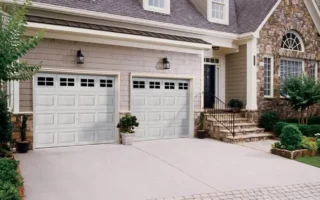A broken window is not just an eyesore – it can also pose safety and security risks. By promptly covering up a broken window using the materials and steps outlined in this guide, you can ensure your home remains safe and protected until a permanent fix is made. By following the safety precautions mentioned and implementing tips to prevent future breakages, you can maintain the integrity of your windows for years to come.
The importance of fixing a broken window
A broken window not only compromises the security of your home but also exposes it to potential intruders and the elements. It’s crucial to address a fractured window promptly to maintain the integrity of your property and ensure the safety of your loved ones. A damaged window can lead to energy inefficiency, causing drafts and increasing heating or cooling costs.
Ignoring a broken window can result in further damage, such as water leakage during rainy seasons, that may lead to mould growth or structural issues over time. By taking swift action to cover up or repair a broken window, you’re proactively protecting your home from these risks while preserving its aesthetic appeal.

Materials needed to cover up a broken window
When it comes to covering up a broken window, having the right materials on hand is essential. To start off, you will need a pair of thick gloves to protect your hands from any sharp edges or glass shards. Next, gather some cardboard or plywood to create a temporary barrier over the broken window.
Make sure to have duct tape or strong adhesive tape available to secure the makeshift cover in place. A utility knife can come in handy for cutting the material to fit properly and neatly cover the window opening. Consider using clear plastic sheeting if you want added protection from the elements while waiting for permanent repairs.
Having these materials ready will help you quickly and effectively cover up a broken window until professional assistance arrives.
Step-by-step guide on covering up a broken window
First things first, gather the necessary materials: measuring tape, plywood or plexiglass cut to fit the window frame, nails or screws, and a hammer or screwdriver.
Next, carefully measure the dimensions of the broken window area to ensure a precise fit for your replacement material. Cut the plywood or plexiglass accordingly using proper tools.
Securely place the cut material over the broken window frame and attach it using nails or screws at regular intervals around its perimeter.
Please make sure everything is snug and secure before giving it a final check. Voila! You’ve successfully covered up that unsightly broken window in no time.
Now sit back and admire your handiwork while enjoying peace of mind, knowing your space is secure until permanent repairs can be made.
Alternative options for covering up a broken window
When you find yourself in a situation where fixing the broken window immediately is not possible, there are alternative options to consider. One option is using temporary solutions like duct tape or clear plastic sheeting to cover up the broken area. These materials can provide a quick fix until proper repairs can be made.
Another alternative is utilizing cardboard or plywood to cover the broken window. Measure the dimensions of the window opening and cut the material accordingly for a snug fit. Secure it in place with nails or screws around the edges to keep it stable and prevent any further damage.
If aesthetics are important, consider decorative window film as an alternative solution. This can add privacy while also covering up the broken glass elegantly.
Safety precautions to keep in mind
When covering up a broken window, safety should be your top priority. Begin by clearing the area around the broken glass to prevent any accidents. Wear heavy-duty gloves and protective eyewear while handling the shards.
Next, carefully remove any remaining glass pieces from the frame using a broom and dustpan. Be cautious not to exert too much pressure that could lead to injury. Consider placing a tarp or blanket over the window as a temporary barrier until it can be properly repaired.
Ensure that pets and children are kept away from the broken window site to avoid potential harm. If you’re working on an upper-story window, use appropriate ladders or scaffolding for safe access.
Dispose of all broken glass in sealed containers to prevent injuries during disposal. Taking these safety precautions will help minimize risks and ensure a smooth process when covering up a broken window.
Tips for preventing future window breakage
To prevent future window breakage, consider installing a protective film on your windows. These films are designed to strengthen the glass and reduce the risk of shattering upon impact. Avoid placing heavy objects near windows that could potentially fall and cause damage.
Regularly inspect your window frames for any signs of wear or deterioration. Rotting wood or weakened structures can make windows more susceptible to breaking. Addressing these issues promptly can help maintain the integrity of your windows.
During extreme weather conditions, such as storms or strong winds, take precautions to protect your windows. Consider using storm shutters or boarding up windows to minimize potential damage from flying debris.
Teach children about the importance of window safety and proper handling to prevent accidental breakage. Supervise young ones when they are playing near windows to avoid any mishaps that could lead to broken glass.
By implementing these tips and staying proactive in maintaining your windows, you can significantly reduce the chances of experiencing future window breakage incidents.




